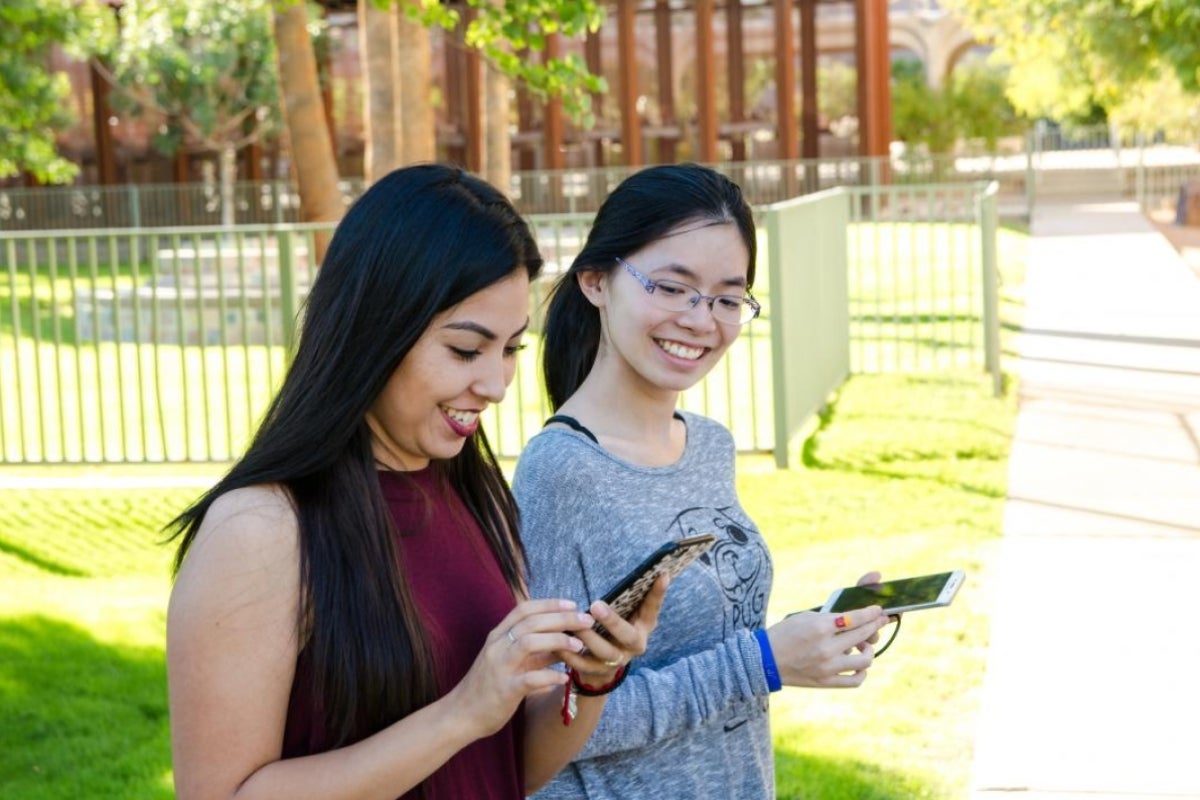Editor's note: This story is being highlighted in ASU Now's year in review. To read more top stories from 2016, click here.
Showing flexibility and dynamic thinking, an ASU professor has created an education tool that leverages the most popular mobile game in U.S. history to improve elementary school students’ geography, math and language skills.
Karen Guerrero’s innovative teaching twist is helping educators engage students using something they’re desperate to hunt down: Pokémon.
“As teachers, we look for a hook — a subject matter that captures the children's attention — so they can learn the concepts,” said Guerrero, of Mary Lou Fulton Teachers College.
Incorporating the Pokémon GO app, which has been downloaded about half a billion times, her lesson also builds map-reading skills and teaches students how to use geospatial technologies and communicate geographic information.
The app caught Guerrero’s interest when her sons began talking about it over the summer. She realized its potential as a teaching tool with its use of real-world locations and maps and the opportunities it offers in analytics.
Her lesson starts by engaging students in a discussion of their experiences and knowledge of the game. Students then can search for the tiny cartoon critters or examine a map showing where Pokémon have been captured in their area. With either approach, the students work as a group to collect and analyze data: What types of Pokémon are found in different locations, especially natural vs. man-made locations? How do their point values vary? Which types of Pokémon are most abundant and which are rare?
Students then brainstorm additional statistical questions and learn how to collect the data required to for answers, organize it into a spreadsheet and plot it in a histogram.
Finally, they create and present a slideshow that explains their questions and illustrates their data analysis.
The lesson can be adapted to match the learning goals for either younger or older students.
English-language learners have received particular benefit, and Guerrero has found that group of students to be as Pokémon crazy as any other.
“They already know the vocabulary and rules of Pokémon, so they have support in learning new academic vocabulary and math concepts in numerical analysis,” she said.
When the lesson moves to its last stage, presenting their work, the students are enthusiastic: It’s their data, they’re interested in the topic, and they’re proud of their work, she said.
Ana Parra, a second-grade teacher in the Gilbert Public School District, instructs a dual-language class in which children who are native English and Spanish speakers learn each other’s language as well as their grade-level content. When she tried Guerrero’s lesson with her students, she was amazed at how much they learned.
“They had used maps before, but had never looked at a paper and computer map together — and they completely understood how to transfer what they saw from one map to another,” she said. “By the end of the lesson, even struggling readers could explain the meaning of ‘data.’ ”
“My students loved the lesson,” said Dotti Craw, a fifth-grade teacher at Summit Academy in the Mesa Public School District. Her English-language learner “students were able to fully participate. It was interesting to watch students naturally help each other throughout the lesson, as they were all very involved.”
Guerrero is sharing the lesson through presentations at national and state-level conferences, visiting sixth-grade classrooms and teaching it to her classes of future teachers at ASU. It supports some of the college's core values including exercising leadership through innovation and championing diversity of people and ideas, she said.
“The lesson is an excellent example of teaching in a way that allows students to learn from their own surroundings and integrates multiple modes of learning,” said Gale Ekiss, co-coordinator of the Arizona Geographic Alliance, an ASU-based organization that promotes geographic literacy.
Guerrero’s lesson, Go GeoWild with Pokemon GO!, can be downloaded for free from the Arizona Geographic Alliance website, which includes more than 330 lessons that integrate geography learning with principles and skills of STEMSS (science, technology, engineering, math and social studies) and literacy. Many of the lessons also provide adaptations for teaching language learners.
Top photo by Anya Magnuson/ASU Now
More Arts, humanities and education

Upcoming exhibition brings experimental art and more to the West Valley campus
Ask Tra Bouscaren how he got into art and his answer is simple.“Art saved my life when I was 19,” he says. “I was in a dark place and art showed me the way out.”Bouscaren is an …

ASU professor, alum named Yamaha '40 Under 40' outstanding music educators
A music career conference that connects college students with such industry leaders as Timbaland. A K–12 program that incorporates technology into music so that students are using digital tools to…

ASU's Poitier Film School to host master classes, screening series with visionary filmmakers
Rodrigo Reyes, the acclaimed Mexican American filmmaker and Guggenheim Fellow whose 2022 documentary “Sansón and Me” won the Best Film Award at Sheffield DocFest, has built his career with films that…





